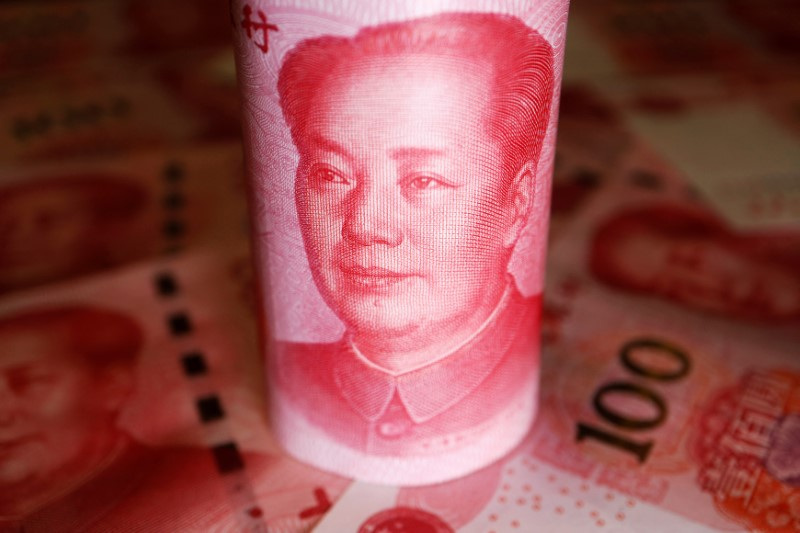By Winni Zhou and Summer Zhen
SHANGHAI/HONG KONG (Reuters) – A sell-off in global markets, fueled by a tapering of yen-funded carry trades, has shone a spotlight on China’s yuan, which is also widely used as a cheap financing currency.
Although the yuan rose sharply 2% against the dollar in August, traders say the carry trades in the yuan are mixed and unlikely to unravel anytime soon.
WHAT IS THE YUAN CARRY TRADE?
In typical carry trades, investors borrow low-yielding currencies, such as the Japanese yen and Swiss franc, to invest in higher-yielding assets, usually currencies, but also to finance leveraged stock trades.
The carry trade in the yuan is similar, but with limitations because the currency is not fully convertible.
A large portion of carry transactions in yuan are made by Chinese exporters parking cash in dollars. In another version, foreigners borrow yuan to invest in mainland markets. A third form of carry trade involves using cheap bonds to buy bonds denominated in dollars and other currencies.
HOW DID THE YUAN TRANSPORT DEVELOP?
Until 2022, when the Federal Reserve began aggressively raising rates and Beijing shifted to easing to help a struggling economy, Chinese interest rates had been higher than their U.S. counterparts for years.
As dollar yields rose, Chinese exporters found they could earn as much as 5% a year if they kept their dollar earnings, compared with paltry returns on yuan term deposits.
Rampant hoarding of dollars by exporters has been a major factor behind the yuan’s depreciation since April 2022.
The depreciation of the yuan meant that foreigners could trade dollar-yuan swaps onshore, earning a hefty spread on these trades. Overseas investors could borrow cheap offshore yuan and convert them into US dollars or other currencies to invest in stocks and bonds. The investors would benefit from exchange rates as the yuan depreciated, as well as the usual returns on the assets.
HOW BIG IS THE YUAN CARRY TRADE?
Analysts say it is difficult to estimate the total size of the yuan carry trade, but it is smaller than the yen-funded global trade as the yen is a more liquid and open world currency.
Macquarie estimated that Chinese exporters and multinationals have built up foreign exchange holdings of more than $500 billion since 2022.
Foreign companies have also sent more of their revenues from China abroad rather than reinvesting in the country.
Meanwhile, foreign bond holdings rose by 920 billion yuan ($128.12 billion) since the end of 2022 to a record high in June, official data showed. That’s evidence of what traders call the reverse yuan carry trade, in which foreign investors profit by lending U.S. dollars and borrowing yuan through currency-hedged swap transactions and then buying yuan bonds.
COULD CHINESE YUAN BE THE NEXT CARRY TRADE TO UNWIND?
The recent winding down of the hugely popular yen carry trade after Japan raised rates sent the yuan rising and raised questions about the viability of the yuan carry trade.
UBS said short positions in the offshore yuan have declined given the currency’s correlation with the yen.
Onshore carry trades could come to a halt if Chinese yields rise and interest rates between the dollar and the yuan converge.

“The carry trade in the yuan will decline once Chinese domestic demand turns around,” said Macquarie’s chief China economist Larry Hu. “It then depends on when the policy stimulus can become decisive enough.”
($1 = 7.1809 Chinese Yuan)


